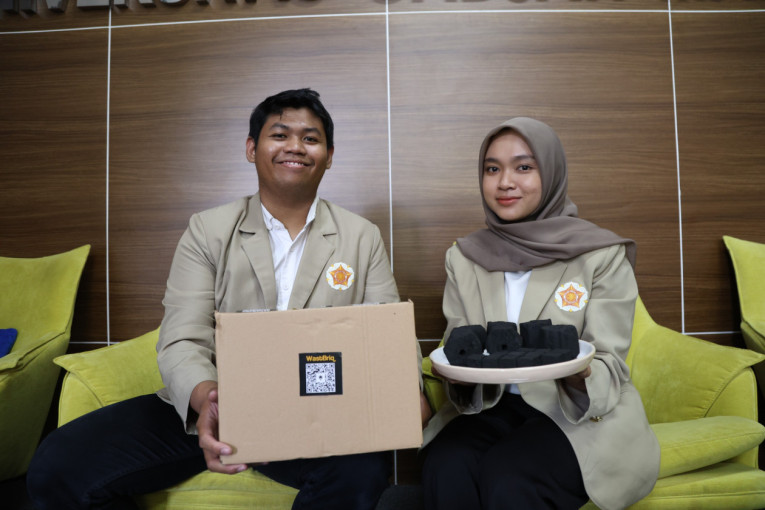
For coffee enthusiasts, the presence of coffee grounds is a familiar aspect. However, most people dispose of the brewing residue in the trash.
By combining coffee grounds with coconut shell waste and rice husks, five UGM students have successfully turned them into environmentally friendly briquettes with long-lasting heat.
The innovation, named WastBriq, was born out of the concern of Ruth Lovarensa Juliandiva Azzahra Pasaribu (Chemistry), Ghazy Atha Fadlurahman (Agroindustrial Product Development), Sarah Salsabillah (Chemistry), Muhammad Naufal Abdillah (Actuarial Science), and J.B. Krisna Arianta (Information Engineering) about the considerable amount of agro-industrial waste, including coffee grounds, rice husks, and coconut shells, becoming an environmental issue in the Special Region of Yogyakarta.
They combined the three biomass wastes to create briquettes as environmentally friendly fuel energy, simultaneously helping to address waste problems and supporting the concept of zero waste.
Ruth Pasaribu mentioned that previous research has shown that briquettes made from coffee grounds produce fewer CO emissions than other types because of their low mass density, allowing for complete combustion.
Meanwhile, coconut shells have high calorific value and rice husks have high thermal efficiency, making them easy to burn.
In addition to reducing agro-industrial waste in the environment, the developed product produces lower carbon emissions than coal.
“The carbon emissions produced by briquettes made from coffee grounds, coconut shells, and rice husks are smaller than coal-based briquettes, around 600-800 ppm. Coal-based briquettes produce CO emissions of up to 2000 ppm,” she explained on Friday (November 17).
The WastBriq also has the advantage of a slow combustion rate and is economical because it is made from waste. These waste briquettes’ calorific value and combustion rate are estimated to be 5420.59 kcal/kg and 17.21g/min, respectively.
This calorific value is higher than wood charcoal, which has a calorific value of around 5000 kcal/kg. Its combustion rate is lower than that of wood charcoal, which has a combustion rate of 33.3g/min.
She explained that burning 75 satay sticks using wood charcoal requires 2 kg of wood charcoal for one hour. When using coffee grounds, coconut shells, and rice husk briquettes, only about 1 kg is needed for one hour, and it may burn even faster due to its higher calorific value.
“WastBriq has a high calorific value, is easy to burn, and has a long-lasting flame. Unlike common briquette products that are not easily ignited,” she explained.
Ghazy Fadlurahman explained that WastBriq is packaged with the best composition according to market needs through product tests to meet the SNI 01-6235-2000 standard for Wood Charcoal Briquettes.
The product has been marketed to more than 15 restaurants in Yogyakarta and retailed to street vendors who still use traditional charcoal.
It has received a positive response from traders because it offers the latest briquette innovation with existing advantages. Moreover, its price is affordable, thus reducing operational costs that affect consumer profits, which is Rp7,500/kg.
“From there, we want our product to reach the local market, especially in Yogyakarta, so our target of 800 kg can be distributed to consumers who need charcoal to switch to environmentally friendly WastBriq to support the zero-waste movement together,” he explained.
Sarah Salsabillah added that WastBriq has been equipped with a QR code. With the code, users can access social media accounts and contacts, making it easier to order and supporting the marketing process through the distributed product.
The presence of WastBriq has become an alternative that is not only environmentally friendly but also addresses waste issues in society. This innovative product has also passed the 2023 National Student Scientific Week scheduled at the end of November at Padjadjaran University.
Author: Ika
Photographer: Donnie

